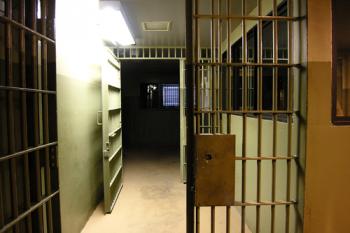Cutter v. Wilkinson
Cutter v. Wilkinson: The Background
The case of Cutter v. Wilkinson deals with the Religious Land Use and Institutionalized Persons Act of 2000. This piece of legislation prohibited government bodies from imposing substantial burdens on a prisoner’s religious exercise, unless the burden exacerbated a compelling state or local interest. The case of Cutter v. Wilkinson began when prisoners in Ohio alleged in a federal district court that prison officials violated the provisions of the Religious Land Use and Institutionalized Persons Act by failing to properly accommodate the inmates’ exercise of their non-mainstream religious beliefs.
In response to this allegation, prison officials argued that the act improperly strengthened or bolstered said religions and thus violated the First Amendment’s establishment clause, which effectively outlaws government from creating laws that favor or respect an establishment of religion. The district court ultimately rejected this argument and ruled for the inmates. This decision; however, was reversed by the Sixth Circuit Court of Appeals. Eventually the case of Cutter v. Wilkinson made its way to the United States Supreme Court.
The case of Cutter v. Wilkinson was filed by five residents of an Ohio prison. Two of these inmates including practices of Asatru, while one was regarded as a minister of the white supremacist Church of Jesus Christ Christian, one a Satanist and the fifth a Wiccan.
Cutter v. Wilkinson: The Question
The question surrounding the case of Cutter v. Wilkinson asked if the federal law preventing government from burdening a prisoner’s religious exercise violates the First Amendment’s establishment clause.
Cutter v. Wilkinson: The Decision
The decision rendered by the United States Supreme Court in Cutter v. Wilkinson stated unanimously (9 to 0 vote) that the federal law does not violate the First Amendment’s establishment clause.
The majority opinion presented in Cutter v. Wilkinson was delivered by Chief Justice Ruth Bader Ginsburg. The decision reflected the court’s ruling that on its face the Religious Land Use and Institutionalized Persons Act made a direct accommodation permitted by the First Amendment to the United States Constitution.
The Supreme Court of the United States in Cutter v. Wilkinson stated that the law was an effort to help the natural government-created burden on religious exercise that prisoners were confronted with. Moreover, the Religious Land Use and Institutionalized Persons Act did not discriminate between non-mainstream and mainstream religions. That said, the Supreme Court did point out that constitutional problems could arise if the Religious Land Use and Institutionalized Persons Act was enforced improperly and religious inmates received favored treatment or if some religious exercises and security concerns were not justly balanced.
Related Topics
- Witmer v. United States
- Willson v. Black-Bird Creek Marsh Co.
- Lugosi v. Universal Pictures
- Busey v. District of Columbia
- Sell v. United States
- Plaut v. Spendthrift Farm Inc.
- Garrity v. New Jersey
- What are Court Cases?
- McConnell v. Federal Election Commission
- International News Service v. Associated Press
